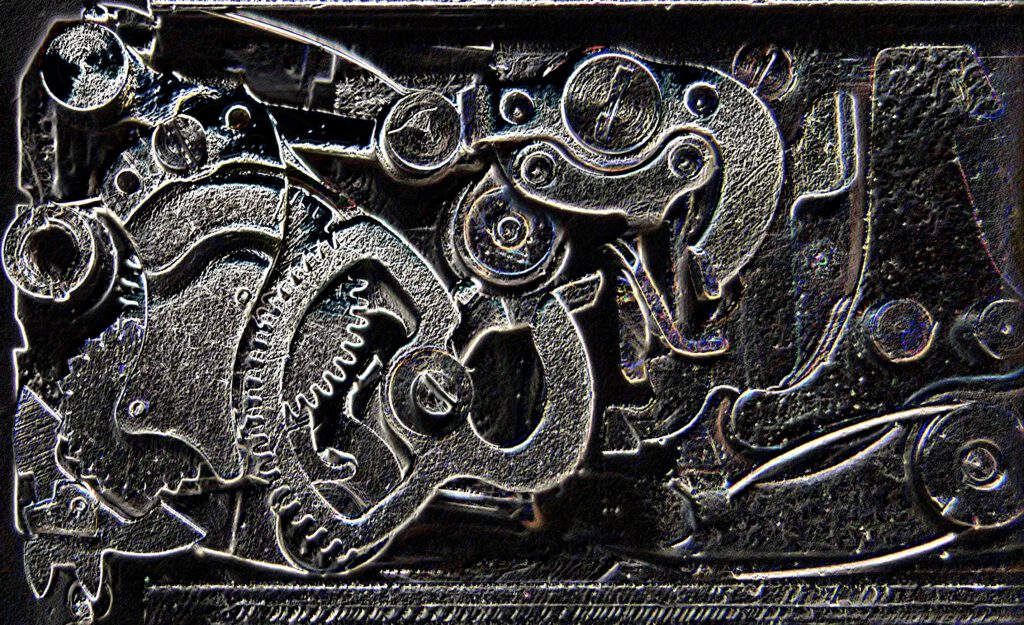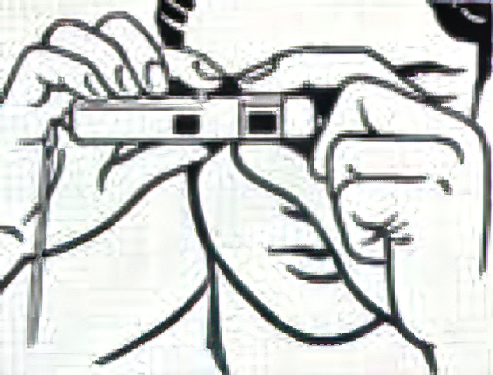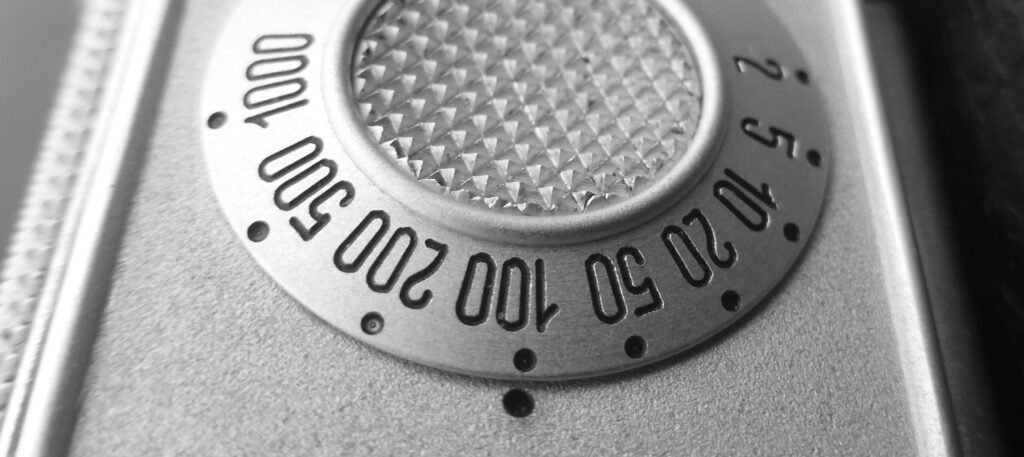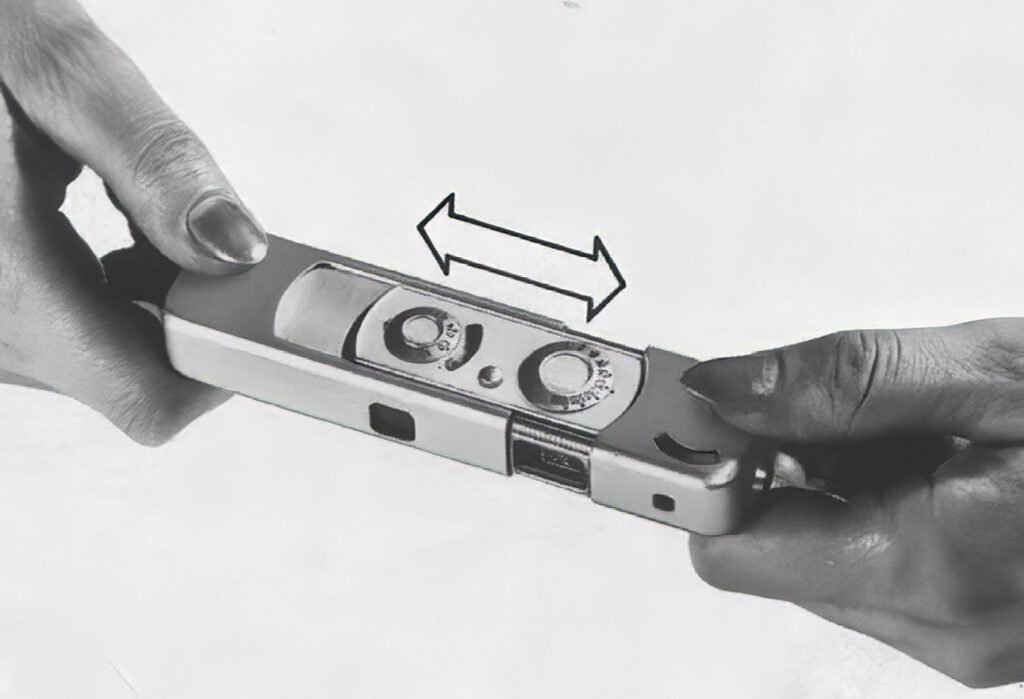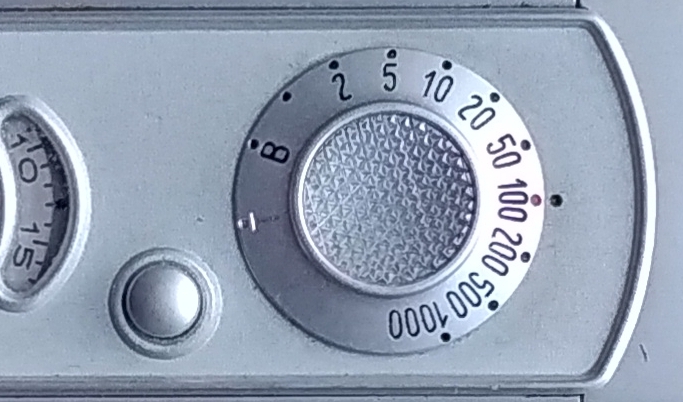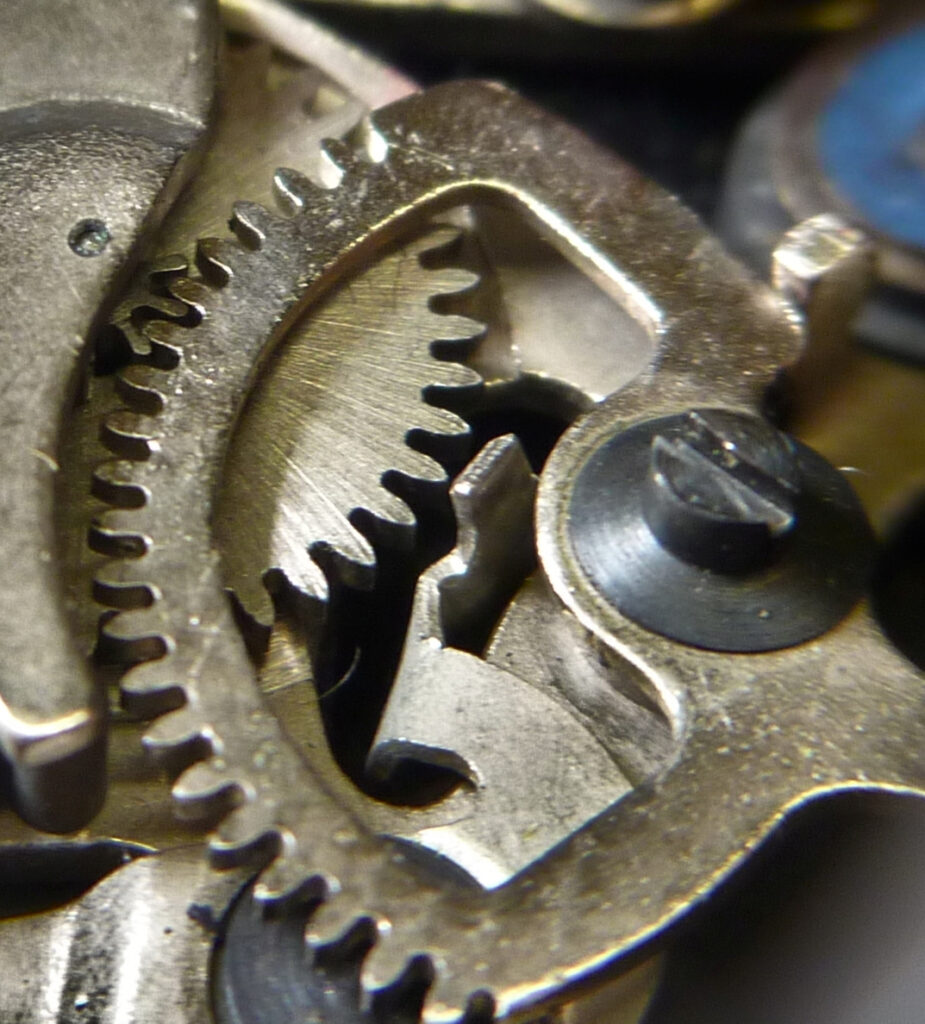Learn everything about the shutter of the mechanical Minox here:
- what parts it consists of
- what functions the individual parts have, and
- how they work together.
All images in this article series can be enlarged in two stages. Click for the first level. Enlarge to the second level with the button at the top right of the first level. Hit the escape key to return to the text.
Page Contents
A mechanical masterpiece
To achieve this user-friendliness, a great deal of ingenuity and sophistication was required in the design of this camera. In addition, a great deal of technical effort was required to manufacture the individual parts with the necessary precision and to assemble them. The shutter of the mechanical Minox is by far the most complicated component in the camera. This is often the case with other camera types as well. However, it’s important to note that the entire Minox weighs at most half as much as the standard lens of a mechanical 35mm camera. All the Minox shutter components together weigh less than 6 g !
It is also noteworthy that the Minox exposure system described here is made almost entirely of metal. This means that wear and tear and aging of the materials are not an issue. Only three tiny parts are made of rubber and serve as buffer elements. Two of them slow down the blades in their end position, while the third serves as a stop for the escapement lever.
Minox models and their shutters
The internal constructive differences between the shutter systems of the Minox A1/B/BL/AX and Minox C/LX/EC are significant and reflect a shift from mechanical to electronic technology.
Minox A/B/BL/AX use mechanical shutters with springs and gears, offering speeds from 1/2 to 1/1000 second without a battery, while Minox C/LX/EC employ electromagnetic shutters with electromagnets, providing speeds up to 1/2000 second in LX and automatic exposure, but requiring a battery.
Mechanical Shutters (Minox A, B, BL and AX)
The following descriptions refer exactly to the Minox A (IIIs) and Minox B 2. They also largely apply to the Minox BL and Minox AX with the restriction that the subsystem of the trigger mechanism on this models may be designed slightly differently to ensure free-running (film feed only after triggering the shutter release button). The description of the shutter blade mechanism subsystem also applies to the Minox C and Minox LX models.
Electromagnetic Shutters (Minox C, LX and EC)
These shutters use electromagnets to control the movement of the shutter blades. They allow for integration with electronic circuits, which is necessary for features like automatic exposure. These models require a battery to operate the shutter, while the Minox BL only requires a battery for the lightmeter, not for the shutter. The Minox C, LX and EC are not considered in this article, with the exception of the shutter blade mechanism for Minox C and LX.
When you press the shutter release button on a Minox, a lot has to happen before the negative is exposed. A complicated, high-precision mechanism is set in motion so that the following can happen:
- The shutter is opened so that light can fall on the film through the lens.
- The set exposure time is measured, i.e., the camera waits until enough light has fallen on the film.
- The shutter is closed again so that the exposed negative is protected from further light exposure.
To ensure that all of this can take place in a controlled manner, various mechanical assemblies are required inside the camera, which are interconnected and influence each other.
Before releasing the shutter, the shutter must be cocked and the exposure time set.
Shutter speed and the exposure system
The exposure time is set by the user with the shutter speed dial. This may happen before or after the shutter is cocked. It depends on when the user decides on the shutter speed. There are three situations:
- The camera is closed and therefore the shutter is already cocked. This is the case when you pick up the camera to take a photo.
- The camera is open and the shutter is cocked. In this case, you have either just picked up the camera or you have just taken a picture, closed the camera and opened it again for the next picture.
- The camera is open after the last photo, so the shutter is not cocked. You want to take the next picture of a different subject that requires a different exposure time.
The position of the shutter speed dial determines the starting position of the escapement and thus the subsequent duration of the shutter opening.
Cocking the shutter and the exposure system
The Minox is cocked when the opened camera is pushed together completely and then opened again.
This transfers the energy needed to move the shutter components to the camera. The energy generated by the user through the force and travel of pushing together and pulling open the camera together is stored in four springs inside the camera.
When cocking the shutter of the Minox, the following happens when pushing the camera together (the components mentioned will be explained in detail later):
- The shutter release button is locked.
- The springs of drive lever and blade locking arm are cocked. These springs are torsion springs located in the respective pivot joints of the two levers. They are used to drive the rotary movement of the levers.
- Driven by the barrel spring in the escapement, the whole escapement and the segment gear rotate into the start position. The start position is determined by the preset position of the shutter speed dial. Afterwards he barrel spring is relaxed.
- The two shutter blades are pushed towards the viewfinder and thus brought into their starting position.
- The two pins at the end of the blade locking arm engage with the eyelets of the shutter blades and hold them in the start position.
- The film is advanced by one frame (approximately 13 mm). With the Minox A and B models, this happens each time the camera is pushed together; with the Minox BL, this only happens if the shutter release button has been pressed beforehand.
- The frame counter is advanced by one frame.
The following happens when pulling the camera open:
- The two tension springs that pull the blades toward the lens are tensioned. However, the blades remain in their starting position, held by the pins of the blade locking arm.
- The shutter button is unlocked.
The Minox is now ready to expose the film.
The subsystems of the Minox shutter
The Minox exposure system comprises five subsystems that come into play one after the other:
- The shutter speed dial transfer
- The trigger mechanism
- The escapement mechanism
- The shutter blade control
- The shutter blade mechanism
We will now take a look at the interior of the Minox in the area relevant to us.
For your orientation: You are looking at the front panel with the shutter speed dial on the right-hand side. On the left-hand side, you can see the window with the exposure counter.
An integrated view of the subsystems
When you remove the front plate, you can see the five subsystems of the Minox exposure system in this area. Seeing this for the first time can be a bit overwhelming. So, let’s take a step-by-step look at each area and see how they work together.
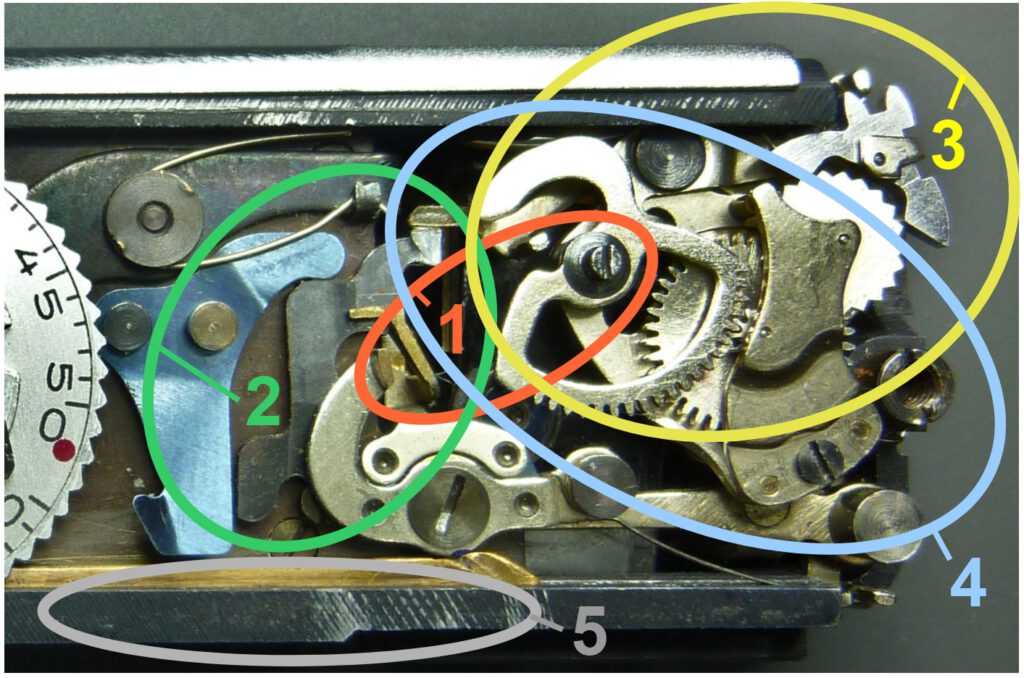
We see the positions of the five main components and their relation to each other. Let’s take a closer look at the functions of the individual components:
- Subsystem: The shutter speed dial transfer
In the orange area 1, the exposure time set on the shutter speed dial is transferred to the internal mechanism. For this purpose, the actual exposure time (1/2 to 1/1000 s) is transferred to the escapement.
If a manual exposure time “B” or “T” is set, 1/2 s is transferred to the escapement and a locking mechanism for the second shutter blade is also activated.
Both mechanisms are described in detail later. - Subsystem: The trigger mechanism
The green circle 2 describes the release mechanism. The pressure of the release button is transmitted to the shutter blade control subsystem. When the button is released, it is pushed upwards again. - Subsystem: The escapement mechanism
The escapement is located in the yellow area 3. The escapement has the function of a stopwatch for the shutter blade control subsystem. It brakes the control lever according to the set time. Only when the time has elapsed does it release the lever. Here is a short video that illustrates this movement. - Subsystem: The shutter blade control
The control functions of the shutter are located in the blue area 4. This mechanism has the task of immediately releasing the first blade after pressing the release button, which opens the lens. After the set exposure time has elapsed, it closes the lens again by starting the second blade. Here is a short video that illustrates this process. The two pins that retract to the left of the viewfinder in the video start the blades.
With the two manual exposure times “B” and “T”, it only starts the second blade when the user releases the release button (“B”) or presses it a second time (“T”). - Subsystem: The shutter blade mechanism
The gray circle 5 represents the shutter blade mechanism (not visible in the photo above). The two blades open and close the lens and thus control the amount of light that falls on the film. Here is a short video that illustrates this process.
Further articles on the individual subsystems
All five subsystems are described in detail and with all components in separate articles below. If you really want to understand what happens after triggering, read these articles, which illustrate everything with photos and videos.
The camera user only has to turn the shutter speed dial to the desired speed and press the release button. Everything else runs automatically and purely mechanically in these five Minox subsystems:
The shutter speed dial transfer does the rest for him. But how is the setting transferred from the dial to the exposure system so that the shutter remains open for exactly the preset time? This is exactly what I explain in the article How the shutter speed dial works.
The trigger mechanism is simple in terms of normal shutter speeds. However, for the manual shutter speeds “B” and “T,” there is a sophisticated locking arm that engages with the normal shutter mechanism. Both is explained in my article The trigger mechanism.
The escapement mechanism is undoubtedly the most complicated and fascinating subsystem of the Minox. My article How the Minox escapement works explains in detail which individual parts it consists of and how their interaction leads to the exact opening times of the shutter.
The shutter blade control subsystem is largely hidden in the Minox under the escapement. It is therefore very difficult to see how the times generated by the escapement are translated into mechanical movements in such a way that the blades can perform their tasks at the right moment. I explain how this is possible in the article How the Minox blade control works.
Finally, there is still the question of how the shutter blade mechanism are actually constructed and installed so that they can fulfill their function. You can read about how this is done in the Minox and what amazing processes are necessary for this in my article How the Minox shutter works.
Read the descriptions of all subsystems here:
- The shutter speed dial transfer
- The trigger mechanism
- The escapement mechanism
- The shutter blade control
- The shutter blade mechanism
Conclusion
I hope I have succeeded in providing a reasonably comprehensible summary of the exposure system of the mechanical Minox here.
It took me a year and a half of analysis, reflection, and dismantling of several of these little works of art to arrive at these conclusions. However, since I could not find a technical description of these relationships anywhere on the internet or in conventional literature, the effort was worthwhile for me.
I hope that some camera enthusiasts will find a little more information here that will help them to better understand this camera.
Acknowledgments
At this point, I would like to express my sincere thanks to Rainer from the “Blende- und Zeit-Forum” (Aperture and Shutter Speed Forum), whose tireless help in the form of tips, suggestions for improvement, and encouragement made these texts on the Minox exposure system possible in their present form.
Back to the article Inside Minox – Instruction articles
- Minox A refers to the following variants: Minox II, Minox III, and Minox IIIs. ↩︎
- The Riga Minox is not included here, as it has a completely different shutter and winding mechanism. For details, see here. ↩︎
